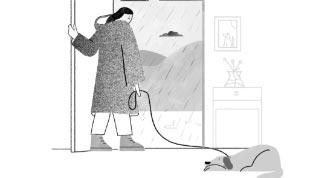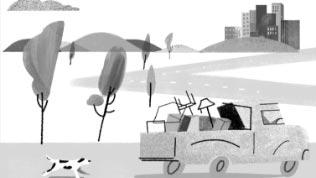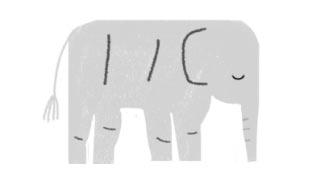What are they worth?
by Tony Juniper
How do we assess the value of animals?
Asked to consider the value of animals, many people's first thought would be about money. During the COVID-19 pandemic, for example, the price of dogs became a popular talking point. Some other people might think of the less tangible, but also very real, value they place in their relationships with companion animals, especially pets such as cats and dogs. Fewer would immediately consider the ways in which our entire civilisation rests on animals. The fact is, though, that our society and economy is embedded in a natural system that is maintained by the activities of animals and, without them, we wouldn't be here.
Animals are vital to the functioning of the biosphere in innumerable ways. Their interactions with plants, fungi and microbes sustain the conditions upon which we, along with all other life, depend. For example, the great whales that sit at the pinnacle of marine food webs are linked to some of the most fundamental processes that shape conditions in our world. They eat other marine creatures, including krill, and, in the process, take nutrients from deeper water to be released via their faeces into the ocean, nearer to the surface, where they fertilise blooms of planktonic algae. As the plankton grow, they extract carbon from the atmosphere and release oxygen as a byproduct, keeping carbon dioxide concentrations in check and replenishing oxygen at a level that sustains animal life. Those same photosynthetic plankton, powered by sunshine, are also at the base of the food webs that feed the rest of ocean animal life, including fish and, ultimately, whales. Some plant plankton also release a gas called dimethyl sulphide, an important contribution to cloud formation, which sustains freshwater security on land.
Tropical rainforests are another vast and vitally important system that removes carbon from the atmosphere. While we tend to think first of their trees, these complex ecosystems are held together by pollinating insects, a kind of animal glue. The myriad plants that inhabit these moist, warm forests are nearly all pollinated by bees, wasps, ants, butterflies and beetles (and some by birds and bats), sometimes through very specific relationships between plants and their animal, with certain types of orchid reliant on a single species of insect to complete their life cycle. Rainforest plants produce fruits, animals eat them and, in the process, move seeds around the forests. Monkeys, birds, elephants and tapirs are among the creatures that disperse seeds and, via their digestive systems, trigger seed germination. One study modelled the effect that the loss of these big seed-dispersing animals would have on carbon storage of forests - which, without these animals, would see the disappearance of some of their big trees - and it was very significant.
Pollinator and seed-dispersing relationships are a centrally important, if undervalued, aspect of the carbon cycle and the climatic stability so vital for human societies and economic well-being. Rainforests also play a vital role in global water security, working as colossal pumps, pouring some billions of tonnes of evaporated water into the atmosphere every day - 25 billion from the Amazon alone. In the air, that water travels in what have been called 'sky-rivers': streams of water vapour that can deposit rainfall thousands of miles away, watering croplands that sustain food for humans. It is easy to miss the fundamental role of animals, large and small, in enabling all this.
Many creatures also have more specific values for us. Wild insects not only hold natural ecosystems together but are also vital for farming, since most of the food plants we grow are dependent on animal pollination, mostly by wild insects. In recent decades, we have become obsessed with chemical pest control, but songbirds, bats and beneficial insects like ladybirds bring billions of dollars worth of value each year in controlling the aphids, caterpillars and other damaging insects that consume or spoil crops.
New drugs to treat HIV infection have been derived from frogs that live in forests and eat insects. Butterfly wings have inspired more efficient solar photovoltaic technology. Alongside many other examples of so-called biomimicry, this reminds us of how natural selection can propose solutions to many of the challenges we face in the modern world.
Our relationship with animals also has a bearing on our risk of exposure to disease. The example of what happened when India's vultures declined is instructive: before a steep decline in the 1990s, there were some 40 million of these large, scavenging birds of prey living on the Indian subcontinent. The three vulture species comprising this vast population played a vital ecological role in cleaning up the rotting carcasses of dead animals, including buffalo and cattle. Then the population crashed - later traced to the widespread use of an anti-inflammatory drug (diclofenac) that was being used to treat farm animals. A creature dying up to a week after this drug was administered still carried residues in its flesh, which was then consumed by feeding vultures. While the drug was beneficial to mammals in some circumstances, it caused organ failure in vultures and, over a few years, these birds were wiped out from huge swathes of their former range.
As a result, the 12 million tonnes of flesh that these birds were eating each year was made available for other scavengers. One beneficiary of this nutritional windfall was India's feral dog population, which rocketed as the vultures declined. With far more food to eat, feral puppies survived to breed. Feral dogs were the principal vector for rabies infections in humans, which, according to one research project, led to tens of thousands more deaths than would have been the case had the vulture population not been destroyed.
Many experts link the COVID-19 outbreak to the illegal wildlife trade. In this scenario, live bats captured from the wild for food were kept in cramped and stressful conditions in a wildlife market in Wuhan, China, in proximity with other animals, including endangered pangolins illegally trafficked to be eaten and used for medicinal purposes. A virus living in a bat was possibly transferred to another species, possibly pangolin, where it multiplied before jumping to humans. We still can't be sure of this; but there's no shortage of other cases where human treatment of animals has led to outbreaks of disease. The 2003 outbreak of SARS was traced to a restaurant in Guangdong in China, where the source was found to be live palm civets (a cat-like arboreal mammal) kept for human food. The devastation caused by HIV-AIDS ultimately derived from a virus jumping to humans following the hunting of apes for food. Ebola outbreaks have been caused when deforestation has brought people into contact with fruit bats in ways that would not normally occur.
It's not only our treatment of wild animals that has implications for human disease. Pigs and chickens kept in factory farms have been the source of swine flu and avian flu among humans. Farmed animals have severe consequences for the effectiveness of some of our most important drugs, antibiotics, which are being rendered progressively more useless by being used on a mass scale to promote growth in farm animals.
These examples are not so much about what animals do for us, as much as it is what they can do to us; but they underline the point that our relationships with animals have a vital bearing on the security of societies. They also confirm that our sense of the economic value of animals is not the only or even the main value we need to recognise.
The more we learn about the relationships between humans and the rest of life on Earth, the more it is apparent that our society, economy and civilisation are embedded in a web of connections and that these have fundamental bearings on our well-being and security. In our modern disconnected society, this truth is too often overlooked. The value of animals is conceived as first and foremost transactional, either in terms of market prices or utilitarian value (for example, as food). While the less tangible social values gained from our pets are widely appreciated, even here, the rocketing price of cats and dogs in the face of rapidly increased demand means that we remain to a large extent fixated on animals' economic value.
To make the transition to a sustainable world, it is essential to understand the wider context of relationships with animals that sustain our biosphere. We won't be able to find an accommodation between human demands and what our planet can indefinitely supply without resetting our sense of our place in the world. It's not an overstatement to say that mainstream culture currently regards the human world as separate from the natural world, nor that our relationship with animals is based more on market values than on the roles played in maintaining an intricate life-support system in which we are embedded.
At one level, this is a matter of basic awareness and education. At another, it's a matter of practical economics. It's also a question of philosophy, of how we see the place of humankind in the cosmos. If our civilisation is to survive and thrive, we must foster shifts in our collective perspective away from being primarily a self-centred species, with demands that must be met and interests that must be served, to seeing ourselves as part of a wider natural system in which we have responsibilities towards the rest of life. This is not only an ethical agenda, a matter of the responsibilities we have towards the rest of life, but also a question of survival, for if people wish to continue living on Earth, the life-support systems that enable that must be protected and repaired.
One way to make practical progress in addressing the crisis of perception is to foster reconnection with the web of life that sustains us. For many people, especially those living in urban areas, meaningful contact with nature can be rare to non-existent. Solutions are to be found for example in the introduction of nature teaching in schools; the creation of allotment gardens in which people can grow food; the fostering of wilder spaces for recreation in and around cities; walking and cycle routes that encourage active transport outside in green settings. We humans are as much creatures of nature as the birds and bees. Remembering that in our day-to-day lives will help to restore our largely broken relationship with the rest of creation and be of benefit not only to animals, but to us too.

Tony Juniper
Tony Juniper CBE is chair of the official nature conservation agency Natural England and a fellow with the University of Cambridge Institute for Sustainability Leadership. He's a former director of Friends of the Earth, executive director with WWF UK, president of the Royal Society of Wildlife Trusts and environment advisor to HRH the Prince of Wales. He has also advised many international companies. Tony is the author of many books, including the best-selling What has nature ever done for us?
Adam Grogan
Head of Wildlife
Recognising that animals have an intrinsic value, is part of the RSPCA's key beliefs. Humanity's existence depends not only on healthy ecosystems, but in accepting that we too are part of that ecosystem. We are probably unique in the history of life on earth, in being the only species that has started to understand the interconnectedness of life on this planet - and yet simultaneously causes damage to these ecosystems, despite what we know.
As Tony Juniper highlights, many people felt that they reconnected with nature during the pandemic, through more walks in the countryside and observing wildlife in their gardens and elsewhere. The RSPCA feels that such a connection is important, but that it needs to go deeper. We should view wild animals as they are; respect them and enjoy them as part of the wild world, not try to make them pets and intervene only when necessary. For example, the RSPCA has long campaigned for an end to the keeping of primates as pets, whose needs can rarely be met in a home environment.
Finally, re-evaluating our relationship with animals so that we do not view them solely as economic units fits within the RSPCA's vision of a world where animals are respected for what they are. Our education programmes have been developed to guide a greater understanding among the next generation of why it is important to respect animals. This, in turn, can foster a deeper understanding of why it is important to recognise the intrinsic worth of animals and why we should do everything we can to protect them, and the places where they live, from our own destructive tendencies. Our survival depends on it.



